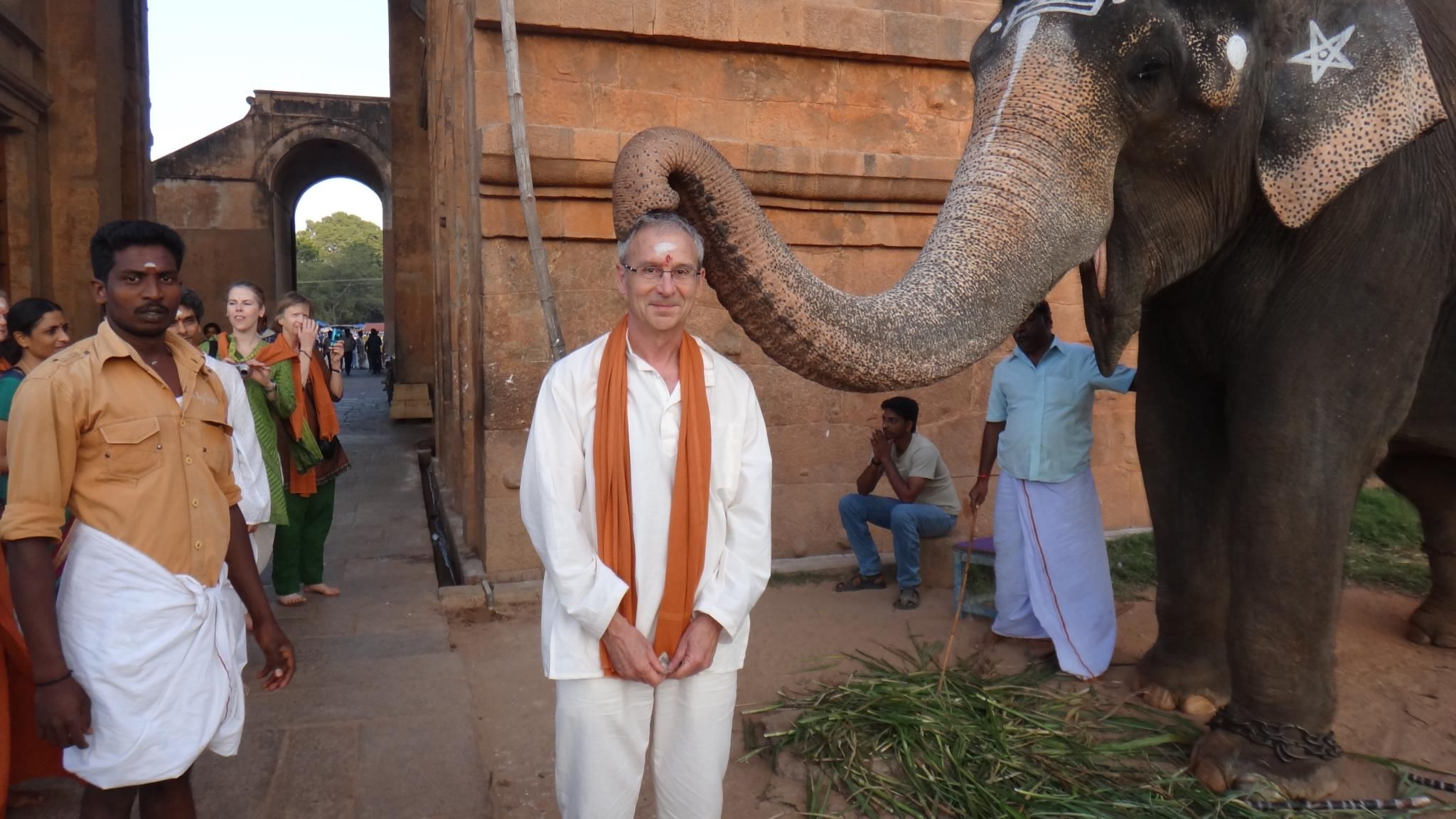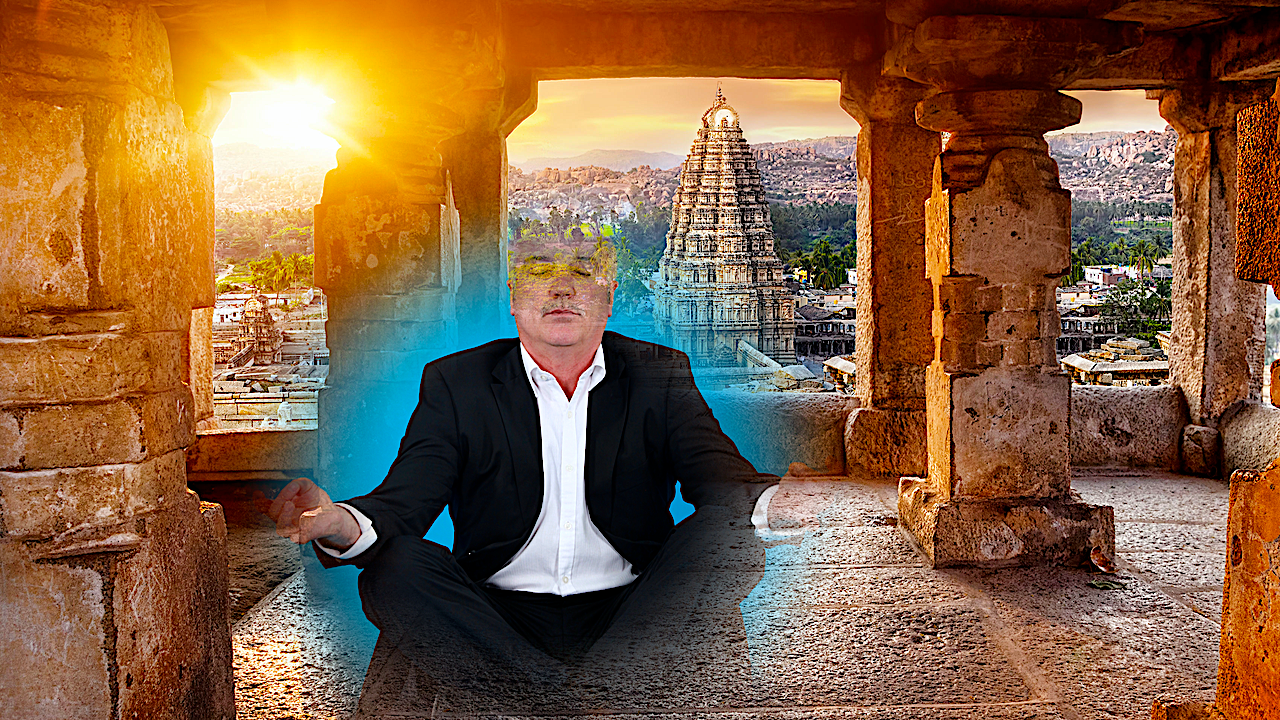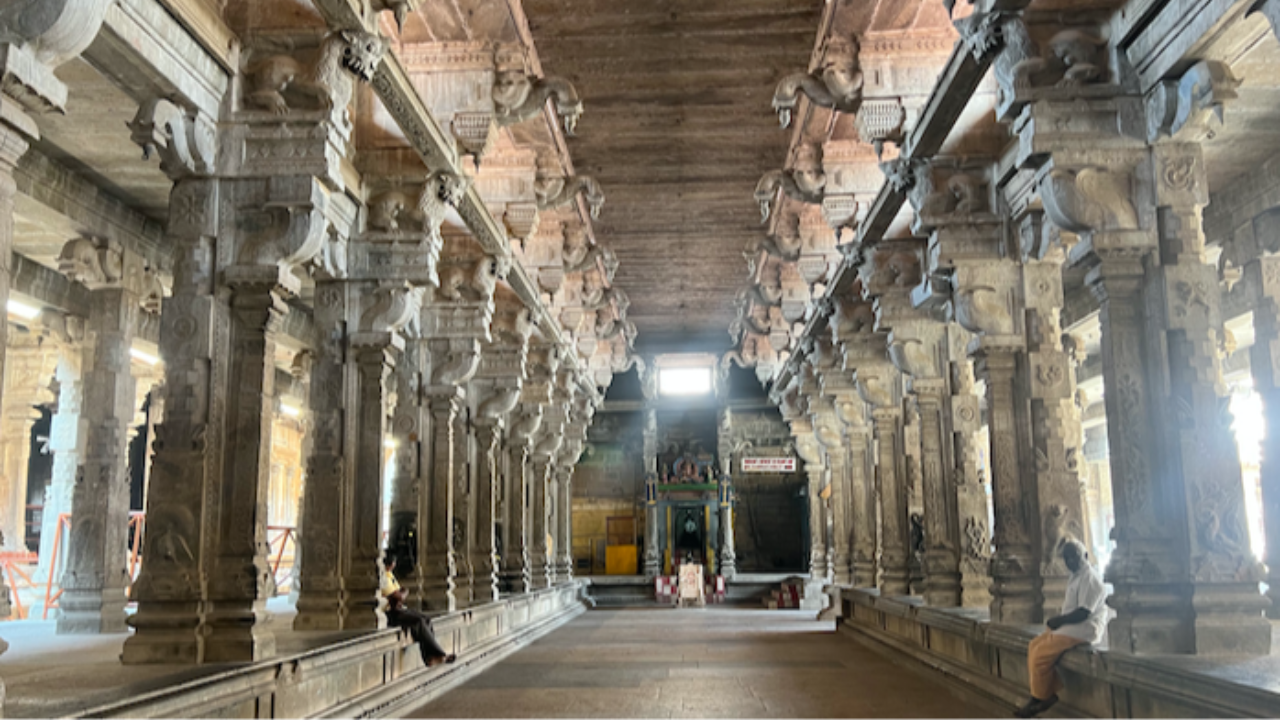Yogic Mystery School ™
Explore The Deeper Dimensions of Mantra and Mysticism.
Emissaries of Ganesha

While temple elephants might be seen as emissaries of Ganesha, could we, as humans, also explore this possibility? On this pilgrimage of life, what does Ganesha symbolize for us?
One of our secret expectations on pilgrimage is to encounter a temple elephant. Somehow, these elephants are different. Could it be because people approach them as Ganesha, the God of Wisdom and Remover of Obstacles? Could it be because they are trained to bless those who come to them by gently touching their trunk on the bowed head of the devotee?
Although live elephants can draw people to the temple, that is not the intended reason for their presence there. It is their connection to divinity and sacredness that is paramount. The unmistakable connection is to Lord Ganesha, Hinduism's beloved elephant-headed God, a child born of Shiva and Shakti. Receiving a blessing from a temple is especially auspicious.
In ancient times, elephants were used in India to clear the forests for agriculture, so...
Meditating In The Temple

I first encountered a Hindu meditating in the temple in Chennai, my native city. My staunch Roman Catholic father did not force me to attend church or to take Catechism classes, but he became concerned about my Hinduness in later years. When I was five, we moved to an orthodox Hindu neighborhood, and my parents enrolled me in the Hindu school nearby. These were among the best years of my life because the influence of Hinduism affected every part of my life. However, my connection to Hinduism is much deeper than the circumstances of my childhood.
In traditional Hindu temples, seeing men and women sitting in deep meditation is expected. You may see them sitting outside one of the shrines within the temple complex. Sometimes, they are positioned alongside the outer wall after you enter the central courtyard. Some you will find within the exterior of the inner sanctum. No matter where they are seated, the depth of their absorption is striking.
Now these are not gurus or yogis or...
A Shaivite Observance & Practice

Pradosham, an especially auspicious evening time associated with Shaivite observances. April 3, the day this blog was created, was "Soma (crescent moon) Pradosham."
Pradosham often involves fasting to raise the bar on spiritual practice, and I explain why and how in the tutorial. Using the esteemed Panchakshara (five-syllabled) mantra (Om) Namah Shivaya is of equal importance, so I give you some tips on how to enhance its effect. It's all in the tutorial right here:
Fasting is used on pradosham to enhance our spiritual practice because the word "doṣa" is a defect, specifically something that can cause us harm. Pradosham is our monthly cycle to cleanse our karmas and purify, which is why the esteemed Panchakshara (five-syllabled) mantra (Om) Namah Shivaya is used to invoke blessing.
The word "Shiva " in Sanskrit means "auspicious," a word that is not in common parlance today, meaning "favorable," a presence that blesses us and ensures successful outcomes.
Close your...
Vedic Chant Learning in India

Greetings from India! Here, at the ashram on the banks of the holy Cauvery river, we’ve been training in mantras, tapping sincerely into the spirit of the Upanishads. However, it is not just the mantras in themselves that are feeding our souls, but everything else we are doing, particularly our visits to the temples.
In the Mastery of Mantra, I am sharing updates on the Taitirreya Upanishad broken up into parts featuring learning the speech word-by-word, the chanting (also broken down), then put together in easy-to-chant phrases, and finally, the translation for each piece. This text is often used in the traditional Veda Patashalas to teach cadence.
The first section is Shiksha Valli, literally “the teaching of pronunciation.” I am training our pilgrims in the various parts of this section here in India through a live process that is in keeping with tradition thousands of years old. Our method is that of the Krishna Yajur Veda’s Taitirreya Shaka, which is...
The Hounds Of Shiva

Each time we circumambulate around the central shrine of a Shiva temple, we encounter a row of 63 mysterious stone statues clothed and venerated with sacred markings. As Nada Yogis, practitioners of sacred sound, these esteemed spiritual personages are of profound significance to us. And here's why:
Between the 6th and 8th centuries, a wave of devotion across India developed into the Bhakti movement of the middle ages. Interestingly, the movement's origins coincided with the Muslim invasions, whose strong beliefs about graven images destroyed many Hindu temples and statues. This detail is relevant solely to the context of the extraordinary calling of these hounds of Shiva, who helped inspire devotion under extenuating circumstances.
These musician saints and poets of the Bhakti period inspired a wave of devotion in India's early medieval period while helping to preserve the stories and the philosophies of Hinduism. Furthermore, they ingeniously expressed in the vernacular (local...
Page from a Pilgrim's Diary

While we learn about trust, faith, and surrender in everyday life, they are the hallmarks of the pilgrim's progress. On pilgrimage, we learn about these processes in extraordinary ways that differ from when we understand these processes amid the vicissities of everyday life. Here is an account of what has transpired recently and powerful lessons from life's teaching over the past three years.
When we returned from India in 2020, we had completed 22 consecutive years of pilgrimage to India, taking a group of our students to visit temples and holy spots while living at Bede Griffith's idyllic ashram on the banks of the sacred Cauvery river in Tamilnadu. Then, in early March of that year, covid began. It was terrifying: no vaccine to protect immunity, an enormous daily death toll, and no drugs to combat the illness.
Three years passed with a deep longing for the spiritual energy that feeds our souls in India. While we experience the power of India's significance in the west through our...
Remembering Bede Griffith's Presence

Today, May 13, we remember the death anniversary of our esteemed mentor Bede Griffiths. In this remembrance, we want to recall his quality of Presence.
Bede often quoted from the Rig Veda, a passage that found its way into the Upanishads as well:
"I know that Great Person who shines beyond the darkness, whose glory is more luminous than the brightness of the sun. In knowing this Supreme Person, this Purusha, we go beyond death. There is no other way (to eternal life)."
Bede was a Catholic priest and Benedictine monk who made his home in India, where we, Asha and I, first met him. Later, he would come and spend a third of the year with us in the United States. He did this for three consecutive years until his death in 1993. At that time, we were not sufficiently aware of the honor and privilege of someone like him making his home with us. We were young and inexperienced. He left a lasting impression upon us, though, particularly his quality of Presence.
Bede practiced the practice of...



